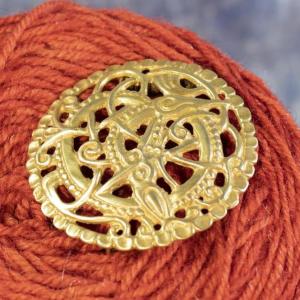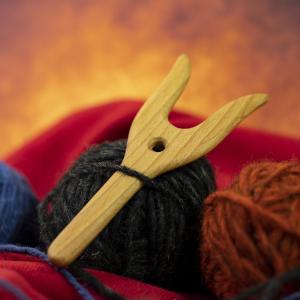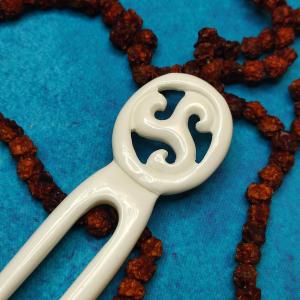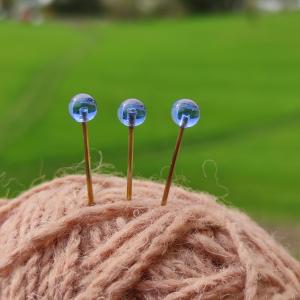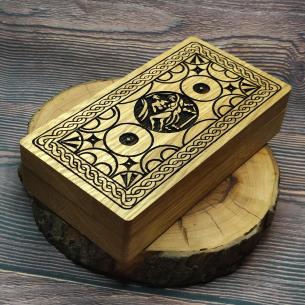Shopping Cart
Thanks to the fact that we have also decorated the plates by burning them into the wood (points 1 - 4), it will be much easier for you to start creating. The material is wood, and it's no more than 1 millimetre thick!
This not only combines quality with the possibility of authentically demonstrating the craft at historical festivals.
Experienced carvers can create incredibly elaborate designs on over 100 carving plates, which is why weaving cards this thin are desirable - you can fit many more of them side by side :)
Size 5,5 x 5,5 cm, hole 5 mm, weight 2 g
For the needs of beginners, the plates are marked with the letters ABCD or numbers
1 2
4 3
⚪ Since we are not only concerned with functionality, but also with minimizing distractions, for example when taking photos from the factory, we chose inconspicuous dots.
. ..
.... ...
Weaving on carriage plates is at least 3000 years old. People have used this technique of creating patterned ribbons both to decorate the hems of clothing and to make fabric strips with patterns and embossments. In the modern world, they can be used as decorative handbag handles or leashes and various bracelets. More advanced weavers can create animal and letter patterns as well as 3D designs with this simple weaving. You won't know until you try :)

As an example, I give a plain single-colour natural dyed weave and a pattern necklace and two amazing silk brocade necklaces from Czech artisans. These are created when you use silver thread or wire as a weft.
All you need is yarn (wool, silk, linen thread, acrylic yarn or metallic thread) to work on the cards. You can stretch the warp threads into the weaving frame, tying the part where the pattern will be created to a solid object (a tree) is also sufficient, and the weaver can tie the other part around her waist. She can thus demonstrate the work at any time and at the same time pack up her bag and leave.
The number of bobbins depends on the pattern you will be making. Even 4 will do for the simplest single colour cords. For common basic patterns, 10 - 20 will be fine for any beginner attempts.
Don't forget that you will also need a bobbin to pull the weft through, which is wound with yarn that you zig zag through the thread each time you turn the carriage plates.
Tip: You can easily find detailed tutorials on the internet and social media.











